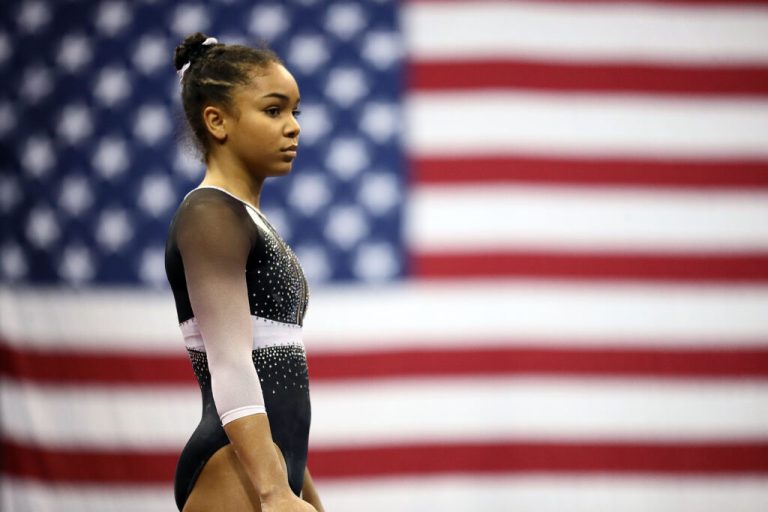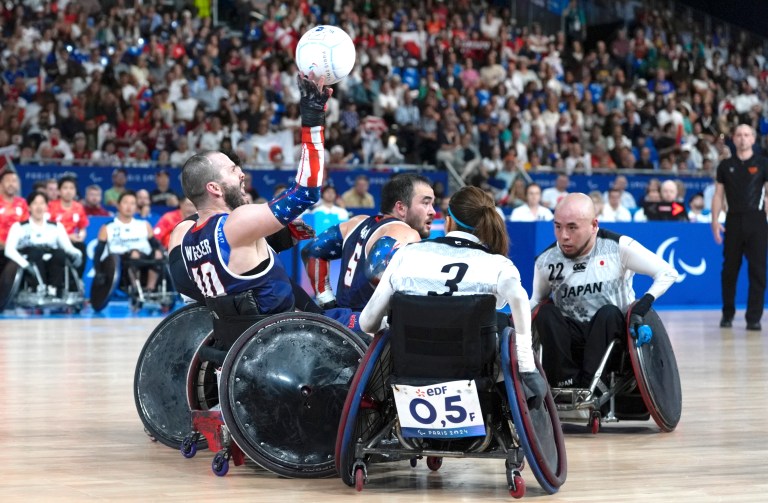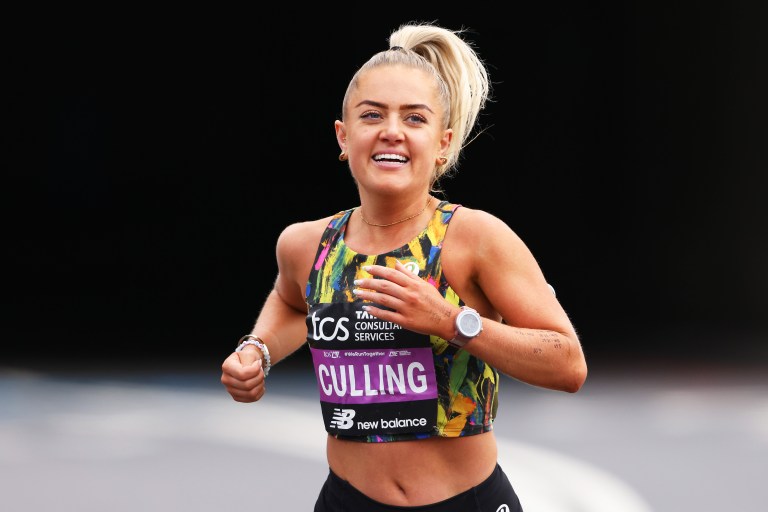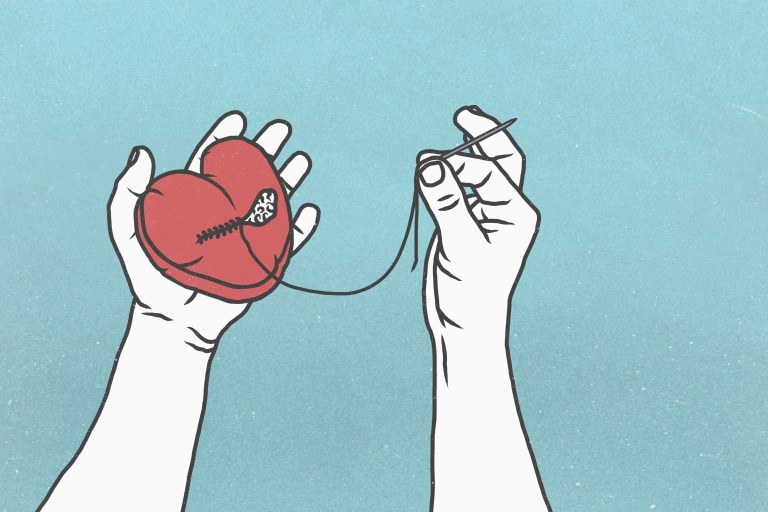Get your pom-poms out — it’s time to celebrate one of America’s oldest, but often overlooked, sports: cheerleading. Over 3 million athletes cheer in the U.S. today, according to USA Cheer, and while many of us now associate the sport with the image of the all-American girl, it wasn’t always this way. Take a peek into its history, and you may turn those assumptions on their head.
For instance, did you know that cheerleading was initially a male-dominated activity? Or that before they sat at the helm of the nation, several U.S. presidents repped their colleges as cheerleaders? Read on to learn about the origin and evolution of this boisterous yet demanding tradition.
Before There Were Cheerleaders, There Were Yell Leaders
There are two main theories as to how and when cheerleading originated in the U.S., but one thread unites them: an Ivy League football game in the mid-1800s. One account claims that it started in tandem with the first recorded American football match between Princeton University and Rutgers University in 1869. After the former’s victory, the school’s students chanted their college’s official cheer, “Sis! Boom! Ah!” — and thus, according to the lore, American cheerleading was born.
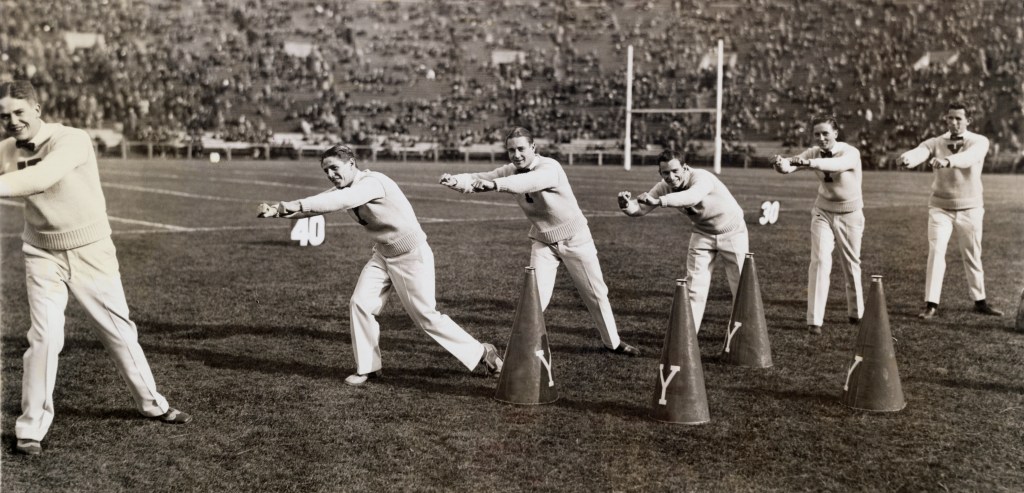
But another, perhaps more widely accepted story takes place at the Nov. 2, 1898 Princeton vs. University of Minnesota game. Fight songs were already gaining traction in the collegiate sports circuit, and Princeton had even created an all-male pep club. Amid a Minnesota losing streak, a medical student named Johnny Campbell grabbed a megaphone, rallied the crowd, and led an organized cheer. Per Varsity.com, it went a little something like this:
“Rah, Rah, Rah!
Ski-u-Mah!
Hoo-Rah! Hoo-Rah!
Varsity! Varsity!
Minn-e-So-Tah!”
The chant was a riff off of a similar cheer that had been yelled at an 1884 game at Princeton University. Thomas Peebles, a Princeton graduate, was later named the first football coach at the University of Minnesota — where he brought the cheer he had learned in school to his practices, and Campbell took it from there.
Throngs of students reportedly ran to join Campbell on the field that day, firing up the crowd. Inspired by his rabble-rousing, groups of “yell leaders” soon began cropping up across the U.S., and Nov. 2 is still celebrated annually as the birthday of cheerleading. These yell leaders not only ramped up fans’ energy at college football games, but they also helped keep the crowds from getting out of control.
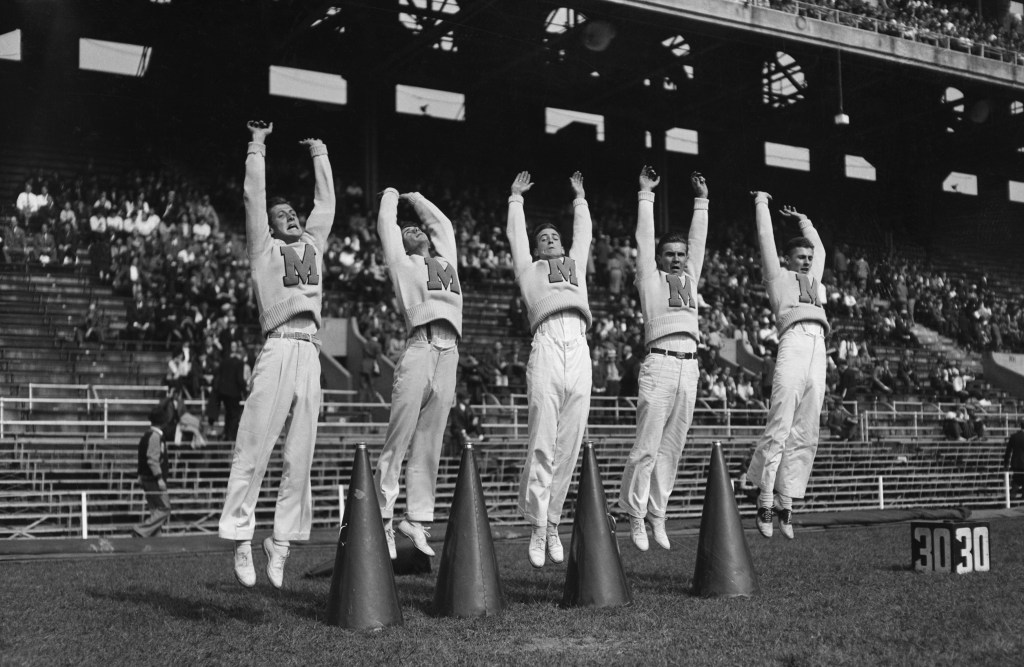
Come 1903, the University of Minnesota debuted one of the first official yell leader groups in the U.S.: Gamma Sigma. Just like Campbell had, the all-male cheer fraternity operated under the belief that louder crowds could help determine the games’ winners.
At the time, these roles were held in high esteem for young men, as they were thought to build character by teaching leadership, sportsmanship, and discipline. According to a 1911 issue of Nation, per HuffPost, “the reputation of having been a valiant ‘cheer-leader’ is one of the most valuable things a boy can take away from college. As a title to promotion in professional or public life, it ranks hardly second to that of having been a quarterback.”
Fun fact: The male cheerleader-to-politician pipeline has been strong over the past century. George W. Bush, Dwight D. Eisenhower, Ronald Reagan, and Franklin D. Roosevelt were all cheerleaders, while Mitt Romney was part of a prep school pep club, and Rick Perry was an official yell leader at Texas A&M University.
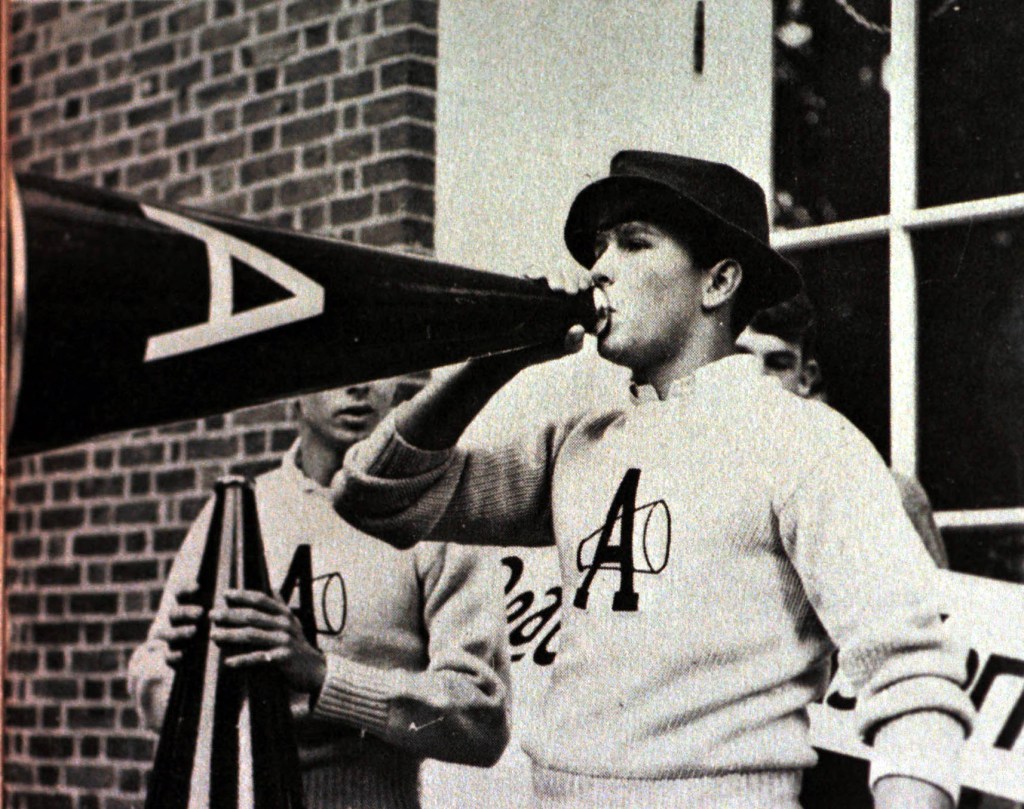
George W. Bush cheerleading in 1964
Women Take Over
In 1923, the University of Minnesota earned yet another claim to fame in the annals of cheerleading history: It was the first to make the sport co-ed. The integration didn’t immediately catch on at schools around the nation, though, according to Cheer Daily. Newspapers at this time largely used words like “chap,” “fellow,” and “man” when writing about cheerleaders, and the sport remained predominantly male for the next couple decades.
But all that changed when multitudes of men were sent off to fight in World War II. Women filled the empty spots left on collegiate cheerleading teams — and by that time, they’d already begun making a few changes. In the ’20s, women cheerleaders added tumbling, flashcards, acrobatics, and dance into their routines, and in the ’30s, they began incorporating paper pom-poms.
Not all men returning from war were happy about this. As Susan Birrell and Cheryl L. Cole wrote in Women, Sport, and Culture, one opponent insisted that women cheerleaders “frequently became too masculine for their own good” due to their “loud, raucous voices.”
However, they were unable to keep women away, and by the 1940s, both women’s presence and the sport itself had become enormously popular. In 1948, Lawrence Herkimer — referred to as the grandfather of modern cheerleading — founded the National Cheerleaders Association, which began helping high schools across the country establish squads. Then, in 1954, the Baltimore (now Indiana) Colts created the first official NFL cheerleading team.
Cheerleaders at a high school basketball game around 1970
Even more doors were opened with the passing of the Equal Rights Amendment in 1972, as the law’s Title IX officially prevented women and girls from being excluded from competitive sports. That same year, the Dallas Cowboys debuted its cheerleading team, which dazzled crowds with elaborate dance routines and now-iconic starred uniforms, marking a shift in the culture of cheerleading as other teams followed suit.
Despite the sport’s rise in popularity since women entered the arena, cheerleaders over the years haven’t always received the same benefits as other athletes. In 2010, for instance, a federal judge ruled that cheerleading didn’t “count” as a sport under Title IX, per ABC News, saying it was “underdeveloped and disorganized.”
“Cheerleading presented a dilemma — how were women supposed to be taking the field when we still have female cheerleaders on the sidelines?” Ellen Staurowsky, a professor of sports media at Ithaca College, told The 19th. “Cheerleading could not be seen as being an empowering women’s sport, even as the decades have gone by and the sport has changed dramatically.”
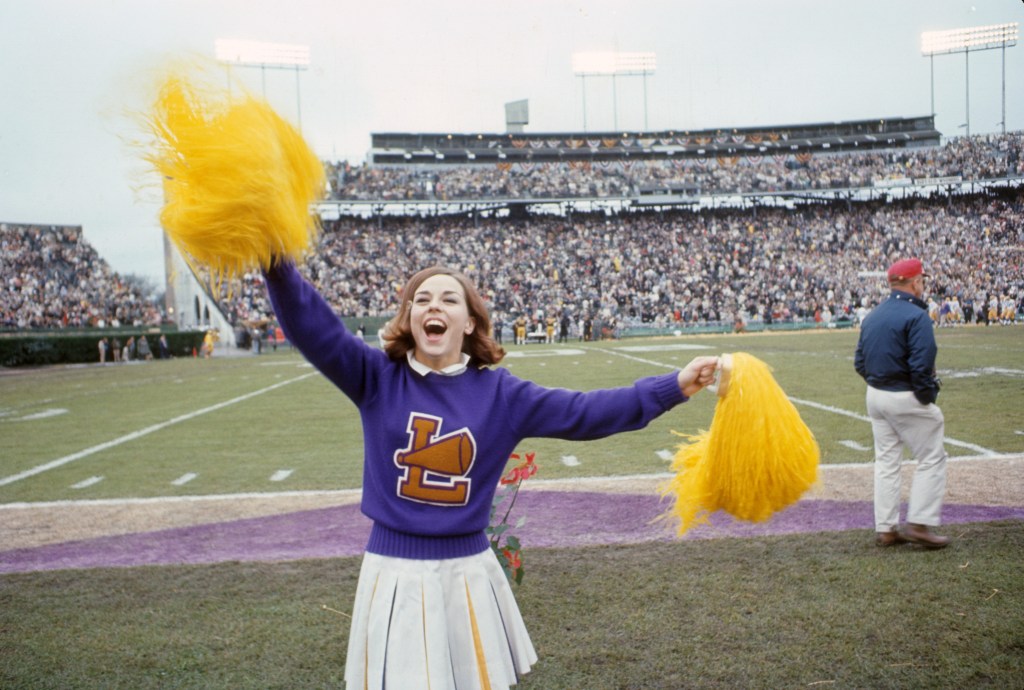
The fact that it’s not a Title IX sport means that college cheerleaders today aren’t subject to NCAA regulations, including rules about the amount of time off they’re entitled to and requirements around reporting injuries. Yet despite this major setback, the tradition of cheerleading, which USA Cheer says is now about 85% female, isn’t going anywhere. In 2021, the International Olympic Committee recognized it as a sport, meaning it’s eligible to apply for the Olympics (although it won’t be at the 2028 Los Angeles Games).
Millions of athletes remain passionate about the sport — including Victoria Kalina, a former Cowboys cheerleader featured on the Netflix docuseries America’s Sweethearts. “As a dancer, you are obsessed with performing and you will not feel that same ecstatic energy and the vivacious roar of the crowd at the stadium and of the fans like a Dallas Cowboys game,” Kalina told Time.
Coach Monica Aldama, who was spotlighted in another Netflix docuseries, Cheer, echoed those sentiments in her book, Full Out. “A lot of us say this about cheerleading: Most of the time it’s not fun. It’s hard. It’s exhausting. You’re putting your body through all this pain and hard work and long hours of working out. And we do it all for these brief moments of success. Whether it’s winning a championship, mastering a skill, or having a successful full out in practice — those moments of success are exhilarating. That’s why we keep coming back and putting in the hours.”
RELATED: This Gym Teacher Invented Basketball on a Challenge by His Boss
When you buy books through our links, Nice News may earn a commission, which helps keep our content free.




